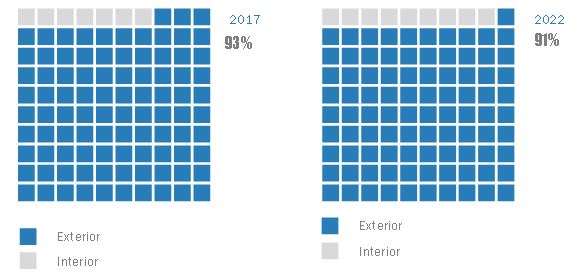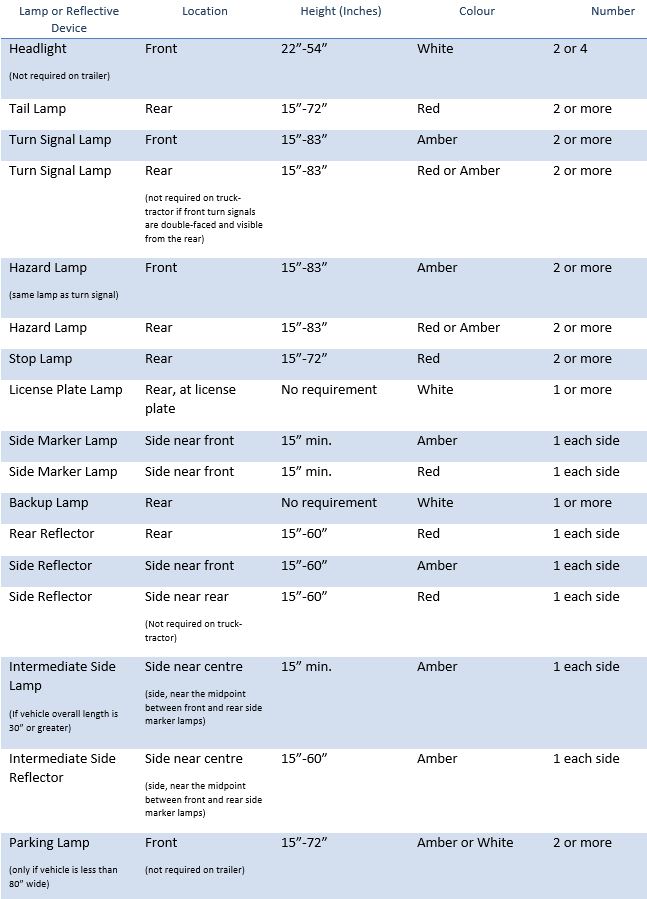Shining a light on automotive illumination solutions
With the increase in applications of lighting systems, especially in passenger cars, the demand for energy-efficient lighting is on the rise. Owing to the properties such as low power consumption and high design flexibility, the demand for LED lighting has grown significantly in the past few years, especially in the interior lighting segment. However, technologically advanced laser systems are also projected to evolve and gain momentum during the next five to seven years.
Author: Lalit Katare, Research Analyst, Markets&Markets
With the increasing focus on passenger and pedestrian safety, several advancements have led to an improvement in lighting technology, functions, and effectiveness. LED headlights are a potential solution for mass-produced cars in the automotive industry. Leading manufacturers such as Hella KGaA Hueck & Co (Germany) and Koito Manufacturing (Japan) offer LED as their prominent product and are investing in R&D to gain traction in the market.
Alternatively, the adaptive lighting systems are also gaining popularity in the market with the increase in demand for luxury cars. As luxury cars are equipped with high-end functions such as auto dimming, headlight levelling, or cornering lights, the demand for adaptive lighting units has increased. Hence, the manufacturers can focus on their R&D activities to formulate new designs and specifications in LED lighting technology and adaptive lighting segment to flourish in the lighting market.
Share of interior and exterior lighting market for automotive
The exterior lighting business accounts for a major share in the revenue generated by the lighting manufacturers. With the increasing demand for comfort, styling, and aesthetics, the interior lighting solutions segment is estimated to grow at the fastest rate during the forecast period. The interior lighting solutions include features such as ambient lighting and mood lighting, which are now available in premium vehicles as well as a few mid-level cars. To cater to the increasing demand, car manufacturers would offer these lighting features in mid-level cars, which will directly influence the lighting market. Hence, lighting system manufacturers can focus on formulating strategies to fulfil the increasing demand for interior lighting solutions.
Lighting regulation to drive the automotive lighting market
Vehicle lighting plays a crucial role, especially when driving on roads with heavy traffic. Road accidents are a major concern for governments across the world. According to the World Health Organisation (WHO), in early 2000s, 1.2 million people died on an average due to road traffic collisions, and 20 to 50 million people were injured or disabled in road accidents. As road traffic injuries are the 10th leading cause of death worldwide and accounted for 1.3 million of all deaths globally in 2015, it is important to improve the driving conditions.
Improving the automotive lighting system is one of the ways to achieve it. One such feature i.e. Daytime Running Light (DRL) has been mandated in Europe. The function of DRL is not to help the driver to see the road but to help other road-users to see the vehicle. DRL has reduced the number of fatal road accidents by approximately 13.8%. Such technology advancements and regulatory legislation are expected to directly influence the automotive lighting industry. Also, in the North American countries, the regulations state that headlights should be on when wipers are in use or the visibility is less than 500ft.
Minimising the driver distraction is one of the main challenges faced by the manufacturers of automotive lighting. High-intensity lights are used for headlights, such as xenon, to overcome such challenges. The California Vehicle Code introduced regulations such as Section 24255 & 24410 and Standard 108 of the Federal Motor Vehicle Safety Standards, which permits adequate illumination of the roadway.
According to the Association for the Work Truck Industry and National Highway Traffic Safety Administration (NHTSA), all lamps and reflective devices should be mounted on a permanent part of the vehicle. Lamps which are in pairs should be mounted symmetrically apart from each other. The face of the lamps installed on vehicles should be parallel or perpendicular to the vehicle centre line, unless it is photometrically certified at the installed angle. Strict lighting regulations in developed nations of Europe and North America have been one of the most impactful drivers for the global automotive lighting market.
The following table lists the mandatory automotive lighting required to be installed on all vehicles with specifications of installations.
Table 1: Automotive lighting regulations
Source: NTEA and the Association for the Work Truck Industry
Advance lighting solutions to cater to the need for comfort and safety
As the trend of miniaturisation intensifies, the automotive lighting industry is expected to incorporate innovations such as single source lighting systems into modern cars. The single source lighting system is based on fibre optic technology, wherein a single source of light provides light to the entire lighting system through a fibre optic cable. This will immensely improve the space for designers and the driver can easily switch between optical fibres using intelligent control electronics.
These fibres can also be moved using motors to create adaptive headlights, which will contribute even more to road safety and enhance the comfort of the driver. The only drawback of this technology is that much of the light is wasted as it travels through the optical fibre.
Adaptive lighting, Organic Light Emitting Diode (OLED) lighting, and laser lighting have already begun penetrating the automotive lighting market. OLED and laser have been identified as the upcoming lighting technologies in the automotive industry. There is a growing demand for high-end luxury vehicles. As these technologies are mostly offered in the premium vehicle segment, their growth is expected to rise with the increase in popularity and demand for luxury vehicles.
Also, growing concerns regarding the safety of vehicle occupants have led to an increase in the demand for better illumination, thereby driving the growth of advanced adaptive lighting systems.
Factors influencing the demand for OLED market
- Comfort: OLED displays or instrument panels may create a more comfortable experience for passengers as these emit soft diffused light, which is closer to the natural light. Also, OLED tail lights will consume less trunk space, leaving more space for utilisation.
- Safety: The OLEDs allow wide area lit panels, which will be more visible to other cars and pedestrians.
- Cost: OLEDs may eliminate the need for special optics and peripheral assembly parts. The increase in adoption of OLED will lead to mass production and eventually the prices will come down. Per the insights from industry experts, by 2025 the price of OLED is expected to fall by 60−65% from the current price.
- Style: OLEDs can be used to create lights in any possible design.
As OLED technology is currently in the introductory phase, it is relatively expensive. The technology could begin its journey in the automotive sector in high-end models. Some carmakers such as BMW AG (Germany), Audi AG (Germany), and Volkswagen (Germany) are more receptive to new technology. BMW has already announced its plan to incorporate OLED lighting in its future luxury sedans.
German automakers Audi AG and BMW AG entered a contest when both announced that they would be the first to bring laser technology to the market. In 2014, BMW became the first auto company to market the laser light technology. Laser lights have long been criticised for their ill effects on the human eye. BMW eliminated these hazards by successfully filtering, diffusing, and eventually reflecting the light onto the road. The direct light from lasers is targeted onto mirrors. These mirrors focus the light on a lens filled with yellow phosphor, which when excited emits intense white light. This white light is eventually reflected on the road, using a reflector. The laser light emits 1,000 times more light than LEDs, which means that a laser light can be made much smaller than a conventional light. Thus, with the increase in demand for luxury cars and advancement in lighting technology there can be high demand for OLEDs and laser lights in the near future
Major players in automotive lighting market
Automotive lighting system manufacturers such as Hella KGaA Hueck & Co (Germany), Magneti Marelli (Italy), Stanley Electric (Japan), Valeo (France), and Koito Manufacturing (Japan) have expanded their manufacturing facilities across various regions. Along with expansion, these players can also focus on their R&D activities and target the upcoming lighting technologies such as adaptive lighting, OLED, and laser technology, which can leverage their business opportunity and overall revenue.












